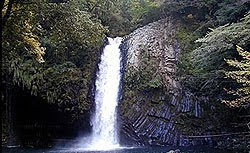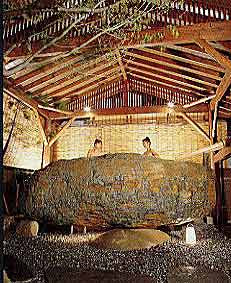A popular resort destination since the 9th century, the Hakone area extends across the collapsed remains of a huge volcano, which was active until about 3,000 years ago, leaving behind a legacy of hot springs and steam vents. Something I am told must be experienced.
And, to further our immersion into true Japanese lifestyle and culture, tonight we will be staying at a RYOKAN–a traditional inn which demands a high level of etiquette–more details to follow later–since this is an absolute first for this ESCAPESEEKER, it is best to describe after I’ve experienced it! It will definitely be interesting to see how our entire team adjust to sleeping on floor mats.
Ryokans have been a part of Japanese culture for centuries. Some of the earliest Ryokans were (and some still are) located on the Tokaido Highway which connected the capital city of Edo (current day Tokyo) and the Imperial Palace in Kyoto. It was a very busy highway as samurai, traders, and others made their way between the two popular destinations in the country. Ryokans were built to welcome these weary travelers who needed to rest before continuing on their long journey. Some Ryokans were very simple and offered extra rooms in their homes for travelers while others were more elaborate and served the higher ranks of the government. In any case the owners worked hard to make their guests feel as welcome as possible as they still do today.
A typical ryokan guest room contains:
- the “agari-kamachi” (after opening the door guests step into this small area and take off their shoes)
- “shoji” (sliding paper doors) which separates the agari-kamachi from the room
- “tatami” mat flooring (reed floor matting)
- low wooden tables
- “zabuton” (sitting cushions)
- futon (sleeping quilts)
- a “tokonoma” (an ornamental alcove built into the wall used for placing flower vases and hanging scrolls)
- an “oshiire” (a closet for futon sleeping quilts)
- an “engawa” (a glass enclosed sitting area separated from the room by a shoji)







